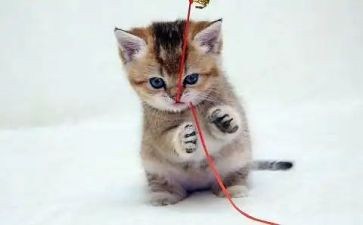作文是表达内心深处情感和感悟的重要方式,作文是展示作者才华和思想的窗口,总结了小编今天就为您带来了描写熊猫猫的作文最新6篇,相信一定会对你有所帮助。

描写熊猫猫的作文篇1
如果你问我最喜欢什么动物,我会毫不犹豫地回答:“我喜欢国宝dd大熊猫!”
大熊猫是我国国宝,也是国家一级保护动物,更是濒临灭绝的珍稀动物呢!可是,你知道吗?大熊猫还是活化石咧,早在遥远的冰川时期就有大兄弟踪迹dd祖玛。当然,冰川时期的祖玛不可能和现在的大熊猫一模一样,冰川时期没有竹子,它们也不吃竹子。那它们吃什么呢?吃肉!冰川时期的祖玛是肉食动物!
大熊猫长得憨头憨脑,胖乎乎的样子让谁见了也忍俊不禁。
一大早,大熊猫饲养员就把大熊猫兰香从睡梦中唤醒啦。兰香不情愿地起了床,伸了个大懒腰,打了个大哈欠。“怎么了?兰香是不是没睡好啊?”“哟,可不是嘛,你看兰香的黑眼圈多重啊!”在听到我两个弟弟的对白之后我不禁笑了出来,我对他们说:“拜托,两位公子,大熊猫是有黑眼圈,但我们看到的黑眼圈绝对不是因为睡眠不好而引起的,ok?”“ok!”他俩给了一个使我晕菜的答复。
我最喜欢大熊猫玩耍时的'样子了。闷了自己就抱成一团,滚来滚去,像个皮球似的。开心时几个伙伴一起去水池里洗个澡、来个水中接力、进行蹬皮球比赛......玩得不亦乐乎。
大熊猫吃食时也很可爱,饲养员为它们送上箭竹,它们把箭竹上的嫩竹叶啃光后剩下的竹子却扔向饲养员。爬起来,一摇一晃走向水池去喝水。喝完水拍拍肚皮,又一摇一晃地走回去,躺在草坪上悠然自得地睡大觉,似乎旁若无人。
这就是我喜欢的大熊猫,你喜欢吗?
描写熊猫猫的作文篇2
熊猫的日食量很大,特别喜欢吃竹叶、竹笋。它生活在我国西南地区的高山中。看在动物园里,绿茵茵的草地上长着一片青葱的竹林,熊猫在竹林中一股禄坐在地上,直挺着身子,敞着俩条短短的后肢,前爪抓住香嫩的竹叶就往嘴里送。它那贪婪的样字逗得人们捧腹大笑。
这时熊猫好奇的望着发笑的人群,似乎在问;你们笑什么呀,接着又满不在乎地吃起来,吃饱后熊猫晃着肥胖的身体,慢悠悠的来到水池边喝水。只见他;俩腿趴在池边,伏下身子,低着圆圆的脑袋,喝起水来,那副模样真可爱。高兴的时候,熊猫还在平坦的'草地下翻筋斗,活像一个大皮球在地上打滚,一个个滑稽的动作赢得一阵阵唱彩,只见它一会倒立,一会翻滚,就像曾经在马戏团受过特殊训练似的,表演的好极了。有趣的是,等待着打家重新跨奖它一番,哪神气劲就甭提了。有的时侯,熊猫低着脑袋,在地上走来走去,既想一为作在不沉思,又像一位急得识热锅上团团转的蚂蚁。熊猫除了以它的稀有珍奇驰名于世界。现存的熊猫是一种残存的古老动物的待。早在距经100万年左右,它就已经存在了。
熊猫有‘活化石’的美称,全世界约莫才有一千多只。在数不胜数的动物当中,我最喜欢的要数熊猫了。我的脑海里总是忘不了它的样子,它肥壮的身体,圆脸上那对八字形的黑眼圈,一身白里镶黑的蓉毛,稚气笨础的动作,滑稽可爱的样子。
描写熊猫猫的作文篇3
来到成都大熊猫繁育基地,才知道这大熊猫可是金贵啊!导游说大熊猫享受副部级以上待遇。一个熊猫要有2——3个人专门负责起居和饲养,如果熊猫半夜三更饿了,它就会敲饲养员的门,饲养员必须起来给它喂吃的。熊猫一成年就要住别墅呢!主要吃竹子和特制的窝头。一天一般要吃70斤以上的竹子,拉大便就要一二十斤。一般吃、玩两小时,睡4小时,所以一旦看到熊猫吃饱了爬到一个地方躺下睡觉,那你就别等它起了,要3——4小时以后了。大熊猫个个憨态可掬,天生长了个毛绒玩具的样子,一辈子都没法照彩色照片了,呵呵!
我看到了熊猫吃竹子就跟我们啃甘蔗一样,先把竹子外面的皮剥了,再吃里面的竹子。不一会儿,有一只大熊猫吃饱了,爬到”床“上去睡觉,可它却把屁股对着游人,架子可真够大的。最可爱的还是一群六个月大的小熊猫,小熊猫需要成群结队地生活,就像在幼儿园里,它们很喜欢打闹玩耍。有一只熊猫很懒,躺在那里吃竹子,吃完了,下了很大的决心才爬起来拿另一根竹子,有两只熊猫非要抢一根竹子吃,抢来抢去,那根竹子被一掰两半儿了,它俩才安心地吃起来,逗得游人们哈哈大笑。
我们都知道熊猫是国宝,繁育基地的导游说,这里的工作人员个个都想变成熊猫,真有意思!
三天的旅程很快就结束了,我可是真不想走,没有玩够,不过瘾呀!爸爸妈妈说,四川好玩的地方可多了,我们才玩了不到五分之一,以后再来吧!
描写熊猫猫的作文篇4
我家养了一只非常可爱的熊猫兔!它的躯体毛白色;鼻、眼睛及耳毛黑色,从颈部沿背脊到尾根有一锯齿状黑色带。躯体两侧有若干对称、大小不等的蝶状黑斑,甚是美观!它那对圆溜溜、黑里发亮的大眼睛,一直闪啊闪,多可爱啊!
熊猫兔吃起饭来更是可爱。它先用它的小鼻子来闻一闻和不和它的口味,要是和它的口味,它会用前爪抓食物,用前面的大牙来啃,啃时会发响声,响声非常有规律。有时它是非常轻快地啃,吃的时候弄出这样的响声,是想吸引大家来看它。吃完以后,小兔伸了伸懒腰,津津有味地舔舔舌头,趴在地上细细地回味刚才美味佳肴。
兔兔走路的样子并不像鹅那样大模大样的,而是在蹦蹦跳跳,脚上似乎装上了弹簧。偶尔它也会小碎步的走路,像皇宫里的格格出宫一样!
有一天,我带着它去小区的花园里玩儿,我看到了许多我的好朋友,于是我就把兔兔抱到了一棵树的旁边,和好朋友玩儿去了。我看到她们一直在喂我的小兔子,我又不好意思去说。结果发现它回家后就拉肚子了,我看到它这个样子,我也很伤心。于是我和爸爸、妈妈开始照顾它:喂它喝水,轻轻地抱着它,爱抚它……以后我会更加爱护它、更加关心它的!
我爱这可爱的熊猫兔!
描写熊猫猫的作文篇5
我家多了一位特殊的家庭成员--熊猫兔。这只兔子有着黑白相间的皮毛,红宝石般的大眼睛。它长得很特别,耳朵和眼圈是黑色的,背上还有一道黑色的纹路。身上有三个黑色的斑点。因为它皮毛的颜色很像熊猫,所以人们都叫它“熊猫兔”。因此,我给它取了一个好听的,名字——熊熊。
刚买回家时,熊熊对家里的一切事物感到非常陌生。把兔笼的门打开它都不敢出来,家里一有什么“风吹草动”它都会缩成一团往兔笼的角落里躲。给它青菜吃,它也只吃一点点。可是后来几天就不一样了——它平时在家里上窜下跳,经常到笼子外活动,有时跳到沙发上;有是蹦到我的书桌上;还有时躲到桌子底下。熊熊既讨喜又让人生气。有一次,我去上课,晚回来了一会儿熊熊就非常生气,跳到我桌子上,在我的作业本上跳来跳去,在我的作业上留下了一个个“足迹”。我看到后非常生气,立即在它的屁股上打了一巴掌。它做出一副可怜巴巴的样子,然后一直向笼子走,不理我了。我拿它没办法,只好放下书包,赶紧撕了几片青菜叶子给它吃。它一看到青菜叶子就十分活跃,扑上去咬了一大口,然后一直沿着叶子的边缘咬,遇到有茎的地方避开,咬其他的叶子。吃饱了后,熊熊喝了几口水,然后咂了咂嘴,好像很高兴的样子。
吃饱了,喝足了,熊熊就睡觉了。熊熊就睡着了。它的头枕在自己的身体上,整个身体蜷曲着,远远望去,像一个白色的绒球。
每次我给熊熊洗澡,它总是很不情愿。害得我得费力地把它抱到澡盆里,冲湿它,然后再给它涂沐浴乳,最后再冲一遍,然后给它吹干。
这就是我们家中一为“特殊的家庭成员”--可爱的熊熊,你们喜欢吗?
描写熊猫猫的作文篇6
the giant panda (ailuropoda melanoleuca) ("black-and-white cat-foot") is a mammal classified in the bear family, ursidae, native to central-western and southwestern china. it is easily recognized by its large, distinctive black patches around the eyes, ears and on its rotund body. though technically a carnivore, the panda has a diet which is 98% bamboo. however, they may eat other foods such as honey, eggs, fish, and yams.
the giant panda is an endangered animal; an estimated 3,000 pandas live in the wild[2][3] and over 180 were reported to live in captivity by august 2006 in mainland china[3] (another source by the end of 2006 put the figure for china at 221[4]), with twenty pandas living outside of china.[citation needed] however, reports show that the numbers of wild panda are on the rise.[5][6]
the giant panda has long been a favorite of the public, at least partly on account of the fact that the species has an appealing baby-like cuteness that makes it seem to resemble a living teddy bear. the fact that it is usually depicted reclining peacefully eating bamboo, as opposed to hunting, also adds to its image of innocence. though the giant panda is often assumed docile because of their cuteness, they have been known to attack humans, usually assumed to be out of irritation rather than predatory behavior.
the giant panda has a very distinctive black-and-white coat. adults measure around 1.5 m long and around 75 cm tall at the shoulder. males can weigh up to 115 kg (253 pounds). females are generally smaller than males, and can occasionally weigh up to 100 kg (220 pounds). giant pandas live in mountainous regions, such as sichuan, gansu, shaanxi, and tibet. while the chinese dragon has been historically a national emblem for china, since the latter half of the 20th century the giant panda has also become an informal national emblem for china. its image appears on a large number of modern chinese commemorative silver, gold, and platinum coins.
the giant panda has an unusual paw, with a "thumb" and five fingers; the "thumb" is actually a modified sesamoid bone, which helps the panda to hold the bamboo while eating. stephen jay gould wrote an essay about this, then used the title the panda's thumb for a book of essays concerned with evolution and intelligent design. the giant panda has a short tail, approximately 15 cm long. giant pandas can usually live to be 20-30 years old while living in captivity.
until recently, scientists thought giant pandas spent most of their lives alone, with males and females meeting only during the breeding season. recent studies paint a different picture, in which small groups of pandas share a large territory and sometimes meet outside the breeding season.[citation needed]
like most subtropical mammals, but unlike most bears, the giant panda does not hibernate.
pandas eating bamboo at the national zoo in washington, d.c.despite its taxonomic classification as a carnivore, the panda has a diet that is primarily herbivorous, which consists almost exclusively of bamboo. this is an evolutionarily recent adaptation. pandas lack the proper enzymes to digest bamboo efficiently, and thus derive little energy and little protein from it.
while primarily herbivorous, the panda still retains decidedly ursine teeth, and will eat meat, fish, and eggs when available. in captivity, zoos typically maintain the pandas' bamboo diet, though some will provide specially formulated biscuits or other dietary supplements.
描写熊猫猫的作文最新6篇相关文章: